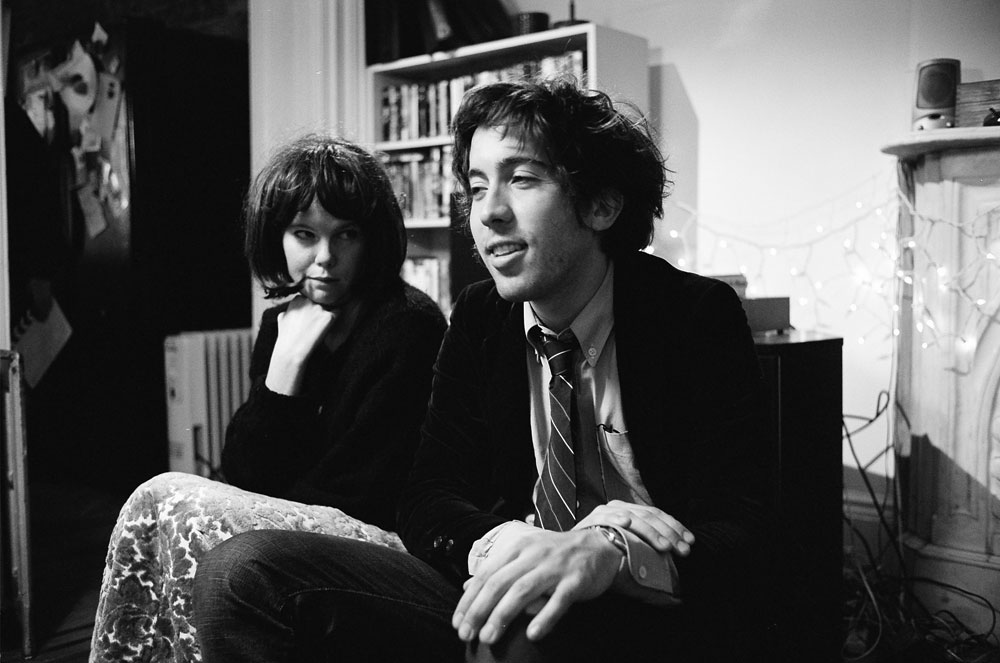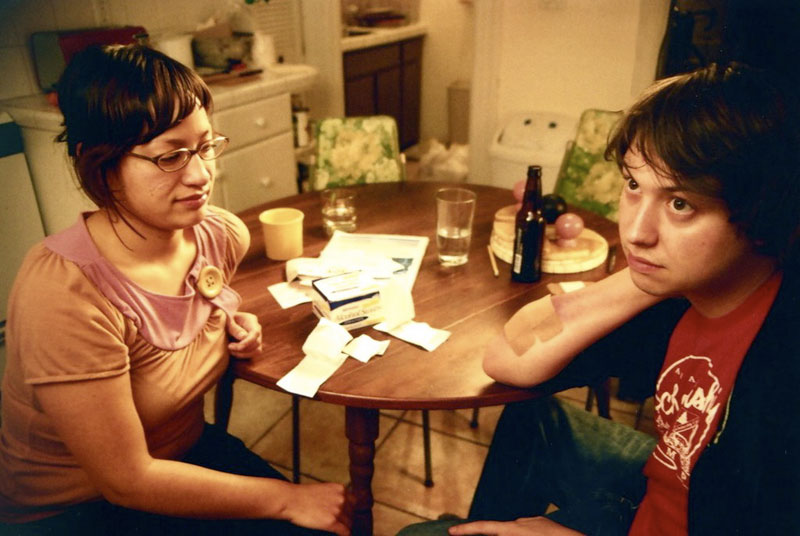I’ve read stories where people like Kevin Smith recall seeing Richard Linklater’s “Slacker” and then they thought “my god, I can make movies too”. The film that did that for me was “Mutual Appreciation” directed by Andrew Bujalski.
I first saw “Mutual Appreciation” at the 2006 Melbourne International Film Festival and it was an absolute revelation to me. I’d never seen anything like it. I found the stories interesting, I was fascinated by its naturalism, and I felt like - for one of the first times - I was watching characters who I could really relate to. They were doing and talking about things that I actually did myself. How to be a young artist. How to make it. Growing up and finding your way in life. I saw “Mutual Appreciation” and something clicked. It was as if someone had suddenly given me permission. I felt like I could now make the kinds of movies I wanted to, and maybe here was a way I could do it.
WHAT IS MUMBLECORE?
As far as I’m aware, the first mumblecore film was “Funny Ha Ha”. It was released theatrically in 2005, and it was Andrew Bujalski’s first film.
The SXSW festival in 2005 featured a number of films that would come to be grouped under the mumblecore umbrella. You had Bujalski’s second film, “Mutual Appreciation”, “The Puffy Chair” by The Duplass Brothers, and Joe Swanberg’s first film “Kissing On The Mouth”. People seemed to think there were similarities between all these films and wanted to put a label on it. The term "mumblecore" was coined by Eric Masunaga, a sound editor who has worked with Bujalski. Masunaga coined the term one night at a bar during the 2005 South by Southwest Film Festival, when asked to describe the similarities between Mutual Appreciation, The Puffy Chair, and Kissing On The Mouth, which all screened at the festival. The term was first used publicly by Bujalski in an interview with indieWIRE.
Stills from Andrew Bujalski's "Mutual Appreciation".
Since then, those filmmakers have gone on to make a bunch of other films, and a number of other directors have also come up. People like Aaron Katz and Dia Sokol are also considered to be part of the movement.
The public and critical opinion of these films is incredibly polarised.
Some people seem to relate to the characters and stories, and can really appreciate the slice of life, naturalistic, personal drama aspect - as opposed to your standard hollywood story.
On the other hand, there seems to be a lot of people who just can’t stand the characters. Some compare it to just watching real life. Some say that the characters are bumbling, self-indulgent fools (or worse). And others find fault with the low production values, or say that the films lack craft.
For me, I do think there is merit in a lot of these films. Some of the criticisms may be valid, but personally I found that they opened a lot of doors. Even if I couldn’t relate to every story or character in all of these films, I was tremendously excited by the movement because I could see how it was really freeing up these filmmakers to make the kinds of projects they really wanted to.
AM I MAKING A MUMBLECORE?
I’m not sure if my film will be described as mumblecore. I guess, ultimately, that’s up to the audience.
In fact, I feel like I had a better idea of what mumblecore was before I really started looking into the movement. In basic terms, mumblecore films are usually about people in their twenties finding their way in life, with naturalistic dialogue, and low production values. But the more I’ve watched films from this movement, the more discrepancies I find. For example, I’ve read definitions of mumblecore on a number of websites that specifically mention shooting on video, but all of Bujalski’s films have been shot on film.
Technically, there are plenty of other differences betweem these so-called mumblecore films. The films by The Duplass Brothers and Joe Swanberg feature a documentary-inspired, almost reality TV, camera style. There are plenty of zooms and the camera moves all over the place, trying to capture the action. On the other hand, Bukalski’s films feel a lot more static. Even though the cinematography is handheld, there are no zooms, and there aren’t a lot of really dramatic camera moves. We take it even further, and Dia Sokol’s film, “Sorry, Thanks”, often features much more of your traditional approach to coverage with a number of setups to each scene.
Stills from Dia Sokol's "Sorry, Thanks".
The way these films use sound is also quite different. Bujalski’s films only feature diegetic sound - so there’s no score or anything like that. I’m assuming this is designed to sell the realism, and in my opinion it’s very effective. Whereas other directors have experimented with having a soundtrack to greater or lesser extents.
Even the subject matter is pretty different from film to film. Yes, a lot of the films are about white middleclass twenty somethings, but there’s plenty of variance. Swanberg’s films seem very much about relationships and sex, while Bujalski’s third film, “Beeswax”, features characters who are a bit older and in a different life stage.
Even with story or narrative structure, I’m not so sure there’s such a strong connection between these films. A very common assertion about mumblecore films is that they lack traditional film structure. People seem to think that watching a mumblecore film is just like watching someone’s life. But after watching and analysing these films, I really can’t agree with that. Perhaps some mumbelcore films lack a really strong hollywood structure, but that certainly isn’t the case for all of them. Again, I think Bujalski’s films (for the most part) have really strong and well considered structures. And if you take the films of The Duplass Brothers, well they’re really going in a whole other direction, fusing elements of mumblecore with the ideas behind genre cinema. Their first film “The Puffy Chair” can be seen as road movie, and their second film “Baghead” (which I thought was really great) uses a lot of horror tropes, and explores the characters’ emotions through that.
"Baghead", directed by The Duplass Brothers.
So, in my opinion, I find it pretty hard to definitively say what mumblecore is anymore. Maybe the spirit of the filmmakers might be similar, maybe, but I’m not even sure of that. Even the way these directors work seems to be pretty different, with some relying more on improvisation, and others, like Bukalski, working off a complete script.
So I really don’t know if people will consider my film to be “mumblecore”. Maybe mumblecore will be over by the time I’m finished. (I’ve read a number of blog posts that say it’s already over.) I guess it’s up to the audience to decide what they think it is. I just hope that I can keep adding on to the conversation. I’ve taken a lot of inspiration from these films, but it was never my aim to simply copy them. I hope I can push certain aspects further or in new directions and give a bit back, since I’ve taken so much inspiration and encouragement from the movement.
RECOMMENDED VIEWING:
- “Mutual Appreciation” - Directed by Andrew Bujalski
- “Funna Ha Ha” - Directed by Andrew Bujalski
- “Sorry, Thanks” - Directed by Dia Sokol
- “In Search of a Midnight Kiss” - Directed by Alex Holdridge
- “Badhead” - Directed by Mark Duplass & Jay Duplass
- “Humpday” - Directed by Lynn Shelton (I’m not sure if this is really a mumblecore film, but it’s awesome!)








